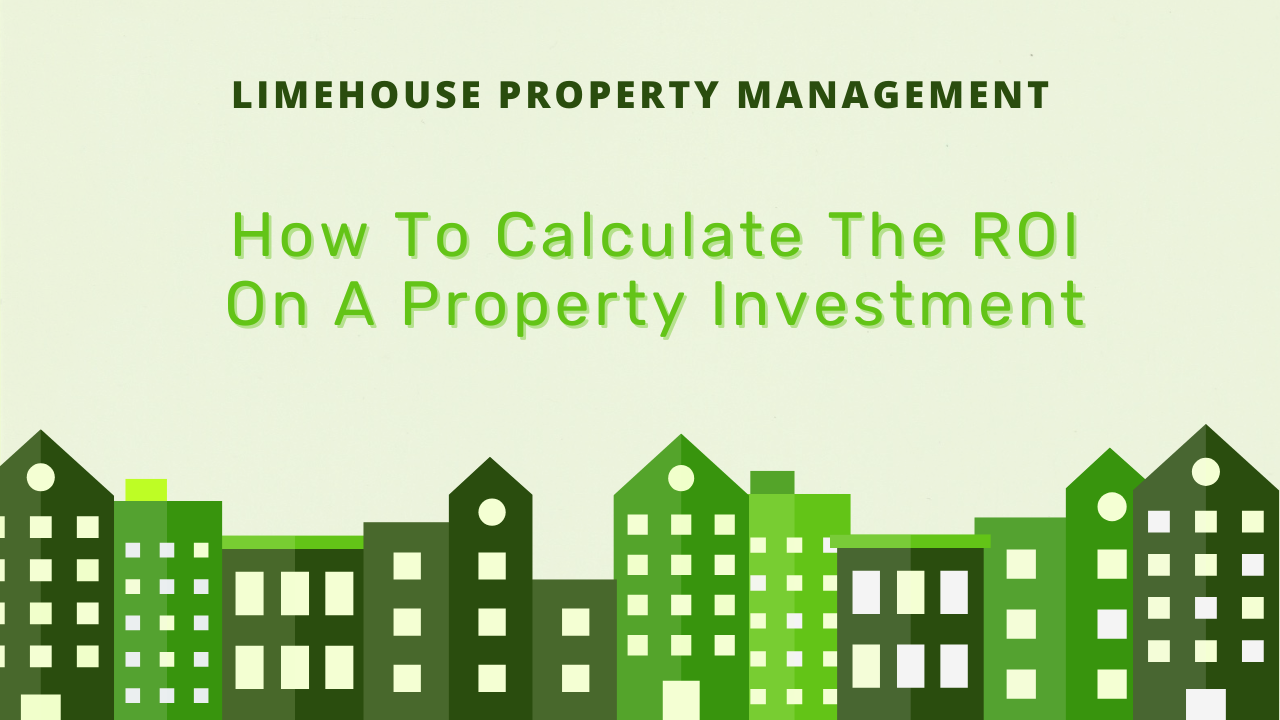How To Calculate The ROI On A Property Investment

Ever wondered if your property investment is truly paying off? Calculating the return on investment (ROI) can give you a clear picture of how profitable your rental property is. For landlords, understanding ROI isn’t just a financial exercise—it’s a tool for making smart decisions, setting goals, and maximizing income.
In this guide, we’ll walk you through essential methods to calculate ROI, from simple formulas to more detailed calculations. By the end, you’ll have the insights to make confident choices about your property investments and build a more successful rental portfolio.
Rental Property Types: Choosing the Right Option for ROI
Before calculating ROI, it’s essential to understand the differences between long-term and short-term rental properties. Each type has its approach to ROI and unique strategies to maximize returns.
Long-Term Rentals: Consistent Earnings with Lower Risk
Long-term rentals involve leasing properties to tenants for extended periods, often months or years. Examples include residential homes, apartments, and commercial spaces where tenants pay rent consistently. These rentals provide stability, steady income, and potential appreciation in property value.
For long-term rentals, an ideal ROI typically ranges between 8% and 12% annually. ROI on long-term rentals is influenced by factors such as property location, market demand, and quality of management. It’s also important to factor in operational expenses, market trends, and taxes when determining the true return on investment.

Short-Term Rentals: Greater Earning Potential but Higher Volatility
Short-term rentals, like vacation homes or properties listed on platforms like Airbnb, are rented out for shorter stays—typically less than 30 days. These rentals offer flexibility and high-income potential during peak travel seasons but may experience reduced income during off-peak periods.
For short-term rentals, a desirable ROI is around 10%, but it can range from 5% during slow periods to 20% during peak seasons. Factors that influence ROI for short-term rentals include location, property type, and how well the property is managed. While short-term rentals have the potential for higher returns, they can also be more unpredictable.
Guide to Calculating ROI on Rental Properties
Now that you’re familiar with the different types of rental properties, let’s explore the key methods for calculating ROI. Each method provides valuable insight, and using the one that best fits your investment strategy is key.
Simple ROI Calculation
The simplest way to calculate ROI is to compare your investment’s total income to its total cost. The formula is:
ROI = (Income from Investment – Cost of Investment) / Cost of Investment
For example, if you invest $100,000 in a property and earn $120,000 in total returns, your ROI would be:
ROI = ($120,000 – $100,000) / $100,000 = 0.2 or 20%
While this method offers a quick view of profitability, it doesn’t account for expenses such as maintenance or taxes, which is why the following methods provide more detail.

Cap Rate Calculation
The capitalization rate (cap rate) is commonly used to measure a property’s profitability. Unlike simple ROI, the cap rate focuses on the property’s net operating income (NOI) relative to its purchase price.
The formula for cap rate is:
Net Operating Income (NOI) = Rental Income – Operating Expenses
Cap Rate = (NOI / Property Purchase Price) x 100%
For instance, if you buy a property for $200,000, spend $1,500 on closing costs, and invest $10,000 in renovations, your total cost is $211,500. If the property generates $12,000 in annual rental income with $2,000 in expenses, the NOI is $10,000.
Using the cap rate formula:
Cap Rate = ($10,000 / $211,500) x 100% = 4.73%
This indicates the property’s annual return as a percentage of its cost. Investors often aim for a cap rate of 8% to 12%.
Cash-on-Cash Return (CoC) Calculation
If you finance a property purchase, the cash-on-cash return (CoC) method provides a clearer picture of returns on cash invested. The formula is:
CoC = (Annual Cash Flow / Total Cash Invested) x 100%
For example, let’s say you buy a property for $200,000 with a 20% down payment ($40,000), plus $3,500 in closing costs and $10,000 in renovations. Your total cash investment is $53,500. If your monthly cash flow is $500 ($6,000 annually), the CoC calculation is:
CoC = ($6,000 / $53,500) x 100% = 11.2%
This method is essential for assessing returns on cash invested, especially for properties with financing.

What’s Considered a “Good” ROI for Rental Properties?
What’s considered a “good” ROI can vary based on investor goals, property type, and local market conditions. However, general benchmarks are:
- Cap Rate: Investors aim for 8-12%.
- Cash-on-Cash Return: Returns of 8-12% are often seen as favorable.
- Simple ROI: Some investors look for 15% or higher.
Your personal goals and risk tolerance will also play a role in defining what “good” looks like for you.
The 1% Rule: A Quick Screening Tool
The “1% rule” is a simple way to screen rental properties. The rule suggests that monthly rent should be at least 1% of the property’s purchase price. For example, if a property costs $100,000, it should rent for at least $1,000 per month to meet the 1% rule.
While useful for quick screening, the 1% rule doesn’t consider property age, condition, or location—all of which impact profitability. Use this rule as a starting point, not a final decision-making tool.
The Bottom Line
Calculating the ROI on a rental property helps landlords assess profitability and identify growth opportunities. By using methods like simple ROI, cap rate, and cash-on-cash return, you’ll have a clear understanding of how well your properties are performing.
But managing properties isn’t always easy. That’s where Limehouse Property Management comes in. Their professional team manages the day-to-day tasks so you can focus on growing your portfolio. From rent collection to maintenance, they’ve got you covered.
Ready to maximize your returns? Contact Limehouse Property Management to make property ownership more profitable, efficient, and easy.
